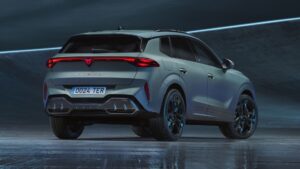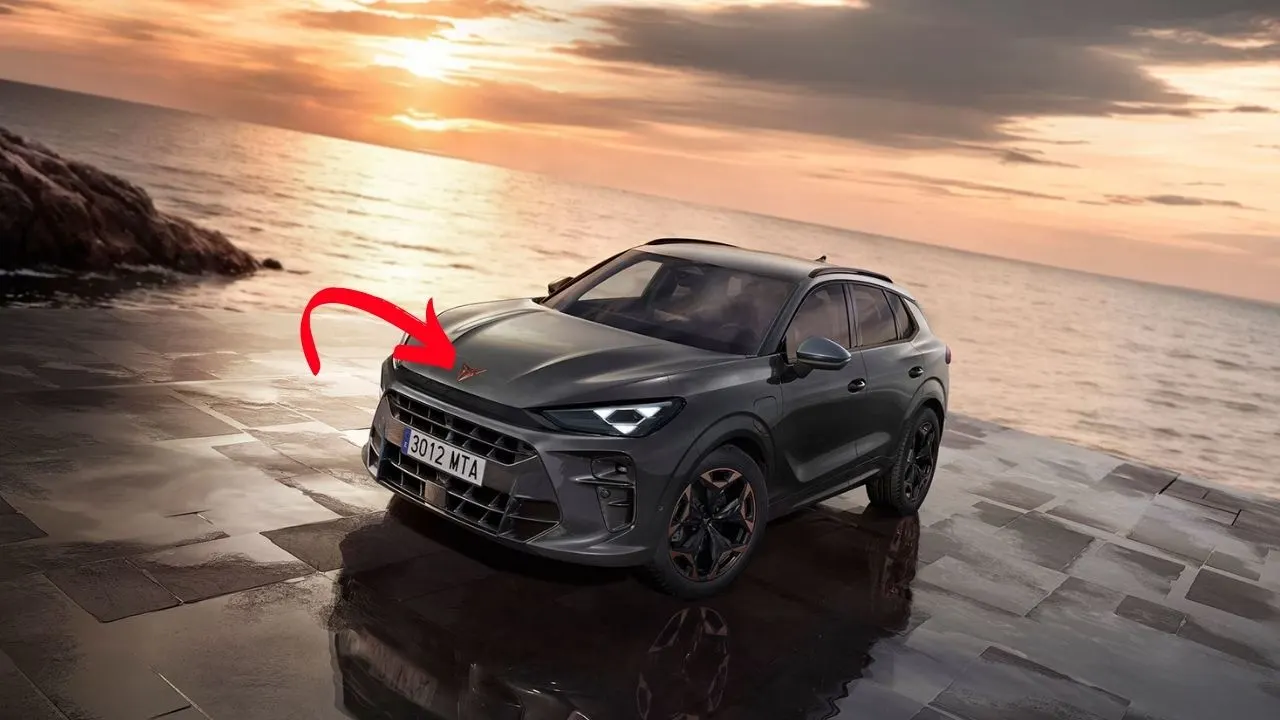The compact SUV market is fiercely competitive, with buyers seeking a blend of practicality, style, and performance without breaking the bank. Enter the 2025 Cupra Terramar, a mid-size SUV from Volkswagen’s sporty Spanish brand, Cupra, that promises to deliver an exhilarating driving experience at a starting price of $58,490 drive-away in Australia. Positioned as a dynamic alternative to mainstream rivals like the Volkswagen Tiguan, Mazda CX-5, and Kia Sportage, the Terramar aims to combine sporty handling, bold design, and advanced technology. But does it stand out as the best sporty SUV under $60,000? This article dives into the Terramar’s performance, design, features, and value to determine if it deserves the crown in this crowded segment.
Overview of the 2025 Cupra Terramar
The Cupra Terramar, named after a historic racing circuit near Barcelona, is the brand’s largest petrol-powered SUV yet, slotting above the Formentor and Ateca in the lineup. Built on Volkswagen’s versatile MQB Evo platform, it shares underpinnings with the Volkswagen Tiguan and the upcoming Audi Q3, but Cupra infuses it with a distinct sporty character. Launched in Australia in July 2025, the Terramar offers a range of powertrains, including a 1.5-liter mild-hybrid, a 2.0-liter turbo-petrol, and a plug-in hybrid (PHEV) variant expected in 2026. With prices starting at $53,990 plus on-road costs (around $58,490 drive-away), it undercuts premium competitors like the BMW X1 and Lexus NX, positioning it as a semi-premium option for buyers seeking performance and value.

The Terramar’s appeal lies in its sporty styling, driver-focused interior, and a promise of engaging dynamics, all tailored to attract young, affluent buyers who prioritize driving enjoyment. But in a segment filled with strong contenders, does it deliver enough to claim the title of the best sporty SUV under $60,000? Let’s break it down.
Performance and Driving Dynamics
Cupra markets the Terramar as a driver’s SUV, emphasizing agile handling and responsive powertrains. The base model, the Terramar S, features a 1.5-liter turbocharged four-cylinder mild-hybrid engine producing 148 horsepower and 250 Nm of torque, paired with a seven-speed dual-clutch automatic and front-wheel drive. While adequate for daily driving, this entry-level powertrain lacks the punch expected from a “sporty” SUV, with a 0-62 mph time around 9 seconds. For buyers seeking more excitement, the 2.0-liter turbo-petrol variants in the V and VZ trims deliver 201 and 262 horsepower, respectively, with the latter achieving 0-62 mph in 5.9 seconds. These models offer all-wheel drive and a seven-speed dual-clutch transmission, providing brisk acceleration and confident grip.
The plug-in hybrid (PHEV) variants, available in 201 and 268 horsepower configurations, combine a 1.5-liter engine with a 19.7 kWh battery, offering over 70 miles of electric-only range. The PHEV’s 268-horsepower VZe trim, while slightly slower at 7.3 seconds for 0-62 mph, provides strong low-end torque and a unique character with synthetic five-cylinder engine sounds piped through the speakers. However, its six-speed gearbox is less responsive than the seven-speed unit in petrol models, occasionally feeling indecisive in dynamic driving.
In terms of handling, the Terramar shines with light, precise steering and well-controlled body roll, thanks to its sports suspension and optional Dynamic Chassis Control (DCC) adaptive dampers. On 20-inch wheels, it offers a firm yet composed ride, smoothing out rough roads while maintaining agility. Compared to rivals like the Kia Sportage or Hyundai Tucson, the Terramar feels sharper, though it doesn’t quite match the BMW X1’s precision in quick directional changes. The optional Akebono performance brakes, available on VZ trims, provide excellent stopping power, enhancing its sporty credentials.
While the Terramar’s dynamics are impressive for a family SUV, some reviews note it lacks the visceral thrill of a true performance vehicle, especially in PHEV form, where the hybrid system can dull the driving experience at higher speeds. For buyers prioritizing outright fun, the gas-only VZ model is the better choice, offering a balance of power and responsiveness that rivals semi-premium options like the Mazda CX-60.
Design and Styling
The Terramar’s exterior design is a standout feature, exuding a bold and aggressive aesthetic that aligns with Cupra’s sporty ethos. Its “shark-nose” front fascia, triangular LED headlights, and illuminated rear light bar with backlit Cupra logo create a striking presence. The long hood, athletic stance, and optional 20-inch Machined Sport Black Matt alloy wheels with copper accents enhance its intimidating yet stylish look. Compared to the more conservative Volkswagen Tiguan, the Terramar feels modern and youthful, though some critics argue its design borders on “generic angry crossover.”
Inside, the Terramar offers a driver-oriented cockpit with high-quality materials, including sustainable options like SEAQUAL® YARN (73% recycled microfibre) and plant-tanned leather. The 12.9-inch touchscreen infotainment system, paired with a 10.25-inch digital driver’s display, is intuitive and supports wireless Apple CarPlay and Android Auto. Copper accents, ambient lighting, and supportive sport seats add a premium feel, while the sliding rear seats allow for adjustable boot space (540–630 liters in petrol models, 400–490 liters in PHEVs). The optional Sennheiser 12-speaker audio system, standard on VZ and America’s Cup Edition trims, elevates the cabin experience. However, some hard plastics and small shift paddles slightly detract from the premium vibe.
Compared to rivals, the Terramar’s interior is more distinctive than the Kia Sportage’s but less refined than the Lexus NX’s. Its focus on sporty design and sustainable materials gives it an edge for buyers seeking a unique, eco-conscious cabin.
Technology and Features
The Terramar is well-equipped for its price, offering a robust suite of standard features across its trims. Even the base S model includes a 15-inch touchscreen, power-adjustable heated front seats, a 360-degree camera, tri-zone climate control, and a power tailgate. Higher trims like the V2 and VZ add a head-up display, adaptive dampers, and advanced driver-assistance systems like Dodge Assist and Speed Limiter. The Terramar’s 5-star Euro NCAP safety rating underscores its comprehensive safety tech, including lane-keeping assist and adaptive cruise control.
The infotainment system, powered by Cupra’s latest operating system, is responsive and user-friendly, though some reviewers note occasional lag. The physical buttons and rollers on the steering wheel are a welcome touch, avoiding the frustration of touch-sensitive controls found in some competitors. Compared to the Mazda CX-5, which offers a simpler but less feature-rich interface, the Terramar’s tech suite feels more modern, though it doesn’t quite match the BMW X1’s seamless iDrive system.
Value for Money
At $58,490 drive-away for the base Terramar S, the SUV offers strong value, undercutting premium rivals like the BMW X1 sDrive20i ($60,400 plus on-roads) and Lexus NX ($61,000 plus on-roads). The mid-grade V trim, priced at $66,490 drive-away, competes with high-spec versions of mainstream SUVs like the Toyota RAV4 and Hyundai Tucson, while the VZ at $73,490 drive-away pushes beyond the $60,000 threshold, making it less relevant for this comparison. The upcoming VZe PHEV, while promising efficiency, is expected to be pricier, likely aligning with the BMW X1 xDrive25e ($67,000 plus on-roads).
The Terramar’s standard features, sporty design, and performance-oriented options make it a compelling alternative to mainstream SUVs like the Kia Sportage ($55,000 fully loaded) and semi-premium models like the Mazda CX-60 ($59,000–$65,000). However, its higher trims approach the price of true premium brands, where refinement and brand cachet may sway buyers. For those prioritizing value and sportiness under $60,000, the base S and mid-grade V trims are the sweet spot.
Comparison with Rivals
To determine if the Terramar is the best sporty SUV under $60,000, let’s compare it to key competitors:
-
Kia Sportage ($45,000–$55,000): Offers a refined ride, spacious cabin, and strong value with features like a panoramic sunroof. However, its handling is less engaging, and its 187-horsepower turbo engine feels less lively than the Terramar’s 2.0-liter options.
-
Mazda CX-5 ($50,000–$58,000): Known for its premium interior and sharp handling, the CX-5 is a strong contender. Its 2.5-liter turbo engine (250 horsepower) rivals the Terramar VZ, but it lacks hybrid options and advanced tech like a head-up display.
-
BMW X1 sDrive20i ($60,400 plus on-roads): Delivers superior refinement and handling but starts just above the $60,000 mark. Its 201-horsepower engine matches the Terramar V, but it’s pricier and less feature-rich at base trim.
-
Lexus NX 250 ($61,000 plus on-roads): Offers luxury and reliability but lacks the Terramar’s sporty edge, with a slower 0-62 mph time (8.7 seconds) and a less dynamic chassis.
The Terramar holds its own with a unique blend of style, performance, and tech, particularly in the S and V trims, which stay under $60,000. It outshines the Sportage and CX-5 in tech and hybrid efficiency, though it trails the BMW X1 in outright refinement.
FAQs
1. What is the electric range of the Cupra Terramar PHEV?
The Terramar PHEV offers over 70 miles of electric-only range, thanks to its 19.7 kWh battery, making it one of the best in its class for hybrid efficiency.
2. Is the Cupra Terramar available in all-wheel drive?
Yes, the 2.0-liter turbo-petrol V and VZ trims come with all-wheel drive, while the base S and PHEV models are front-wheel drive.
3. How does the Terramar compare to the Volkswagen Tiguan?
The Terramar shares the Tiguan’s MQB Evo platform but offers sportier styling, sharper handling, and more premium features, though it’s pricier than the base Tiguan.
Looking Ahead
The 2025 Cupra Terramar makes a strong case as the best sporty SUV under $60,000, particularly in its base S and mid-grade V trims. Its bold design, engaging dynamics, and comprehensive feature set give it an edge over mainstream rivals like the Kia Sportage and Mazda CX-5, while its pricing undercuts premium options like the BMW X1 and Lexus NX. The 2.0-liter turbo-petrol variants deliver the performance expected of a Cupra, while the PHEV’s efficiency appeals to eco-conscious buyers. However, its higher trims exceed the $60,000 limit, and the base mild-hybrid lacks the thrill of pricier models.
For buyers seeking a balance of sportiness, practicality, and value, the Terramar is a standout choice, offering a unique personality in a crowded segment. While it may not dethrone the BMW X1 for ultimate refinement, its combination of style, tech, and driving dynamics makes it a worthy contender for the title of the best sporty SUV under $60,000. For the latest updates and pricing, visit www.cupraofficial.com.au or contact a local dealer.

